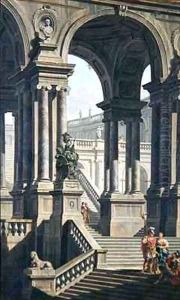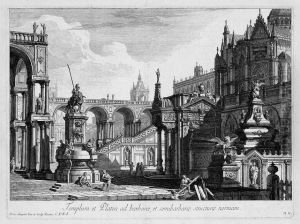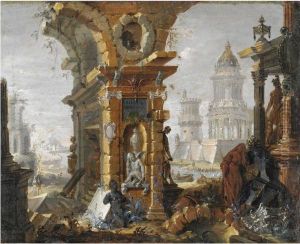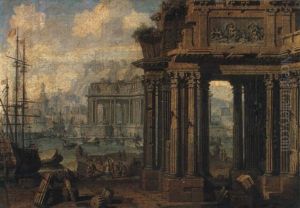Pietro Gaspari Paintings
Pietro Gaspari was an Italian artist, born in Venice in 1720. He is primarily known for his work as a painter, draughtsman, and stage designer within the Venetian school during the 18th century, a period marked by the Rococo and early Neoclassical movements. Although not as widely recognized as some of his contemporaries, Gaspari's contributions to the Venetian art scene, particularly in theater and capriccio painting, were significant.
Gaspari's artistic talents emerged early on and were nurtured in the vibrant cultural atmosphere of Venice. He studied under notable artists of the time, which helped him develop a distinct style characterized by architectural fantasies and imaginative landscapes. His works often depicted classical ruins, Venetian cityscapes, and elaborate imaginary architecture, reflecting the tastes and interests of the period.
In addition to painting, Gaspari was also deeply involved in stage design, contributing to the opulent and elaborate productions in Venetian theaters. His ability to translate the grandiosity and drama of the stage into his paintings was notable. The artist masterfully combined realistic architectural elements with fantastical and theatrical components, bringing a dream-like quality to his works that resonated with the escapism sought after by many during the era.
Pietro Gaspari's career unfolded during a time when Venice was a hub for cultural and artistic exchange. His works were influenced by the Venetian tradition as well as by the broader European art scene. He collaborated with other artists and was part of the complex network of patrons and creators that made Venice a leading center for the arts.
Gaspari's death in 1785 marked the end of a career that, while perhaps not as celebrated as some of his peers, contributed to the rich tapestry of Venetian art. His legacy is preserved in the form of paintings and sketches that capture the spirit of 18th-century Venice, with its blend of reality and imagination, and its ongoing dialogue between the past and then-present artistic innovation.



